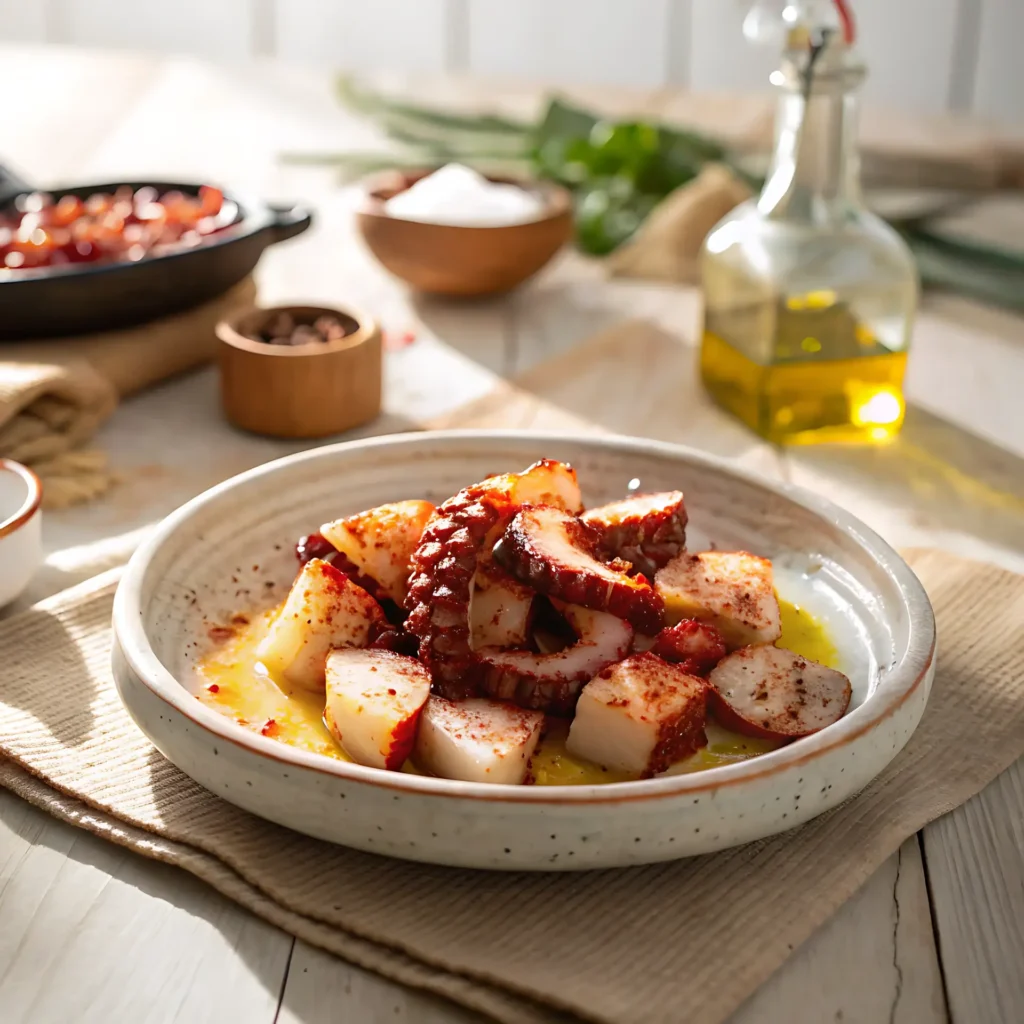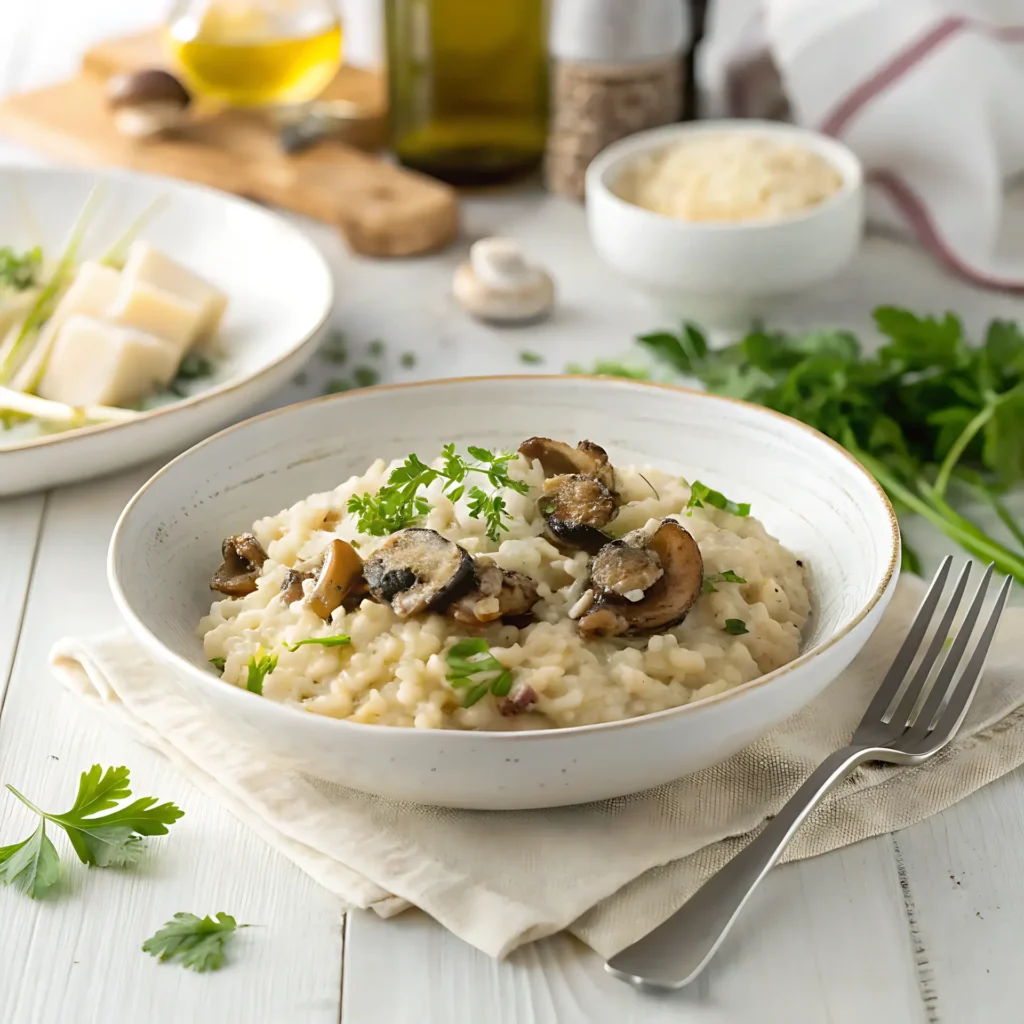Ingredients:
- 1 octopus cool (approximately 2 kg)
- Coarse salt
- Paprika sweet or spicy (to taste)
- Extra virgin olive oil
- 3-4 potatoes (optional)
Preparation:
- Cleaning and freezing: If the octopus is fresh, it is recommended to freeze it for at least 48 hours to break down the fibers and to achieve a texture more tender. Thaw before using in the fridge before cooking.
- Cooking octopus: Put a large pot of water to boil salt-free. Once boiling, "scares" the octopus dipped in and out three times in a row before leaving him in the water definitely. Cook over medium heat for 40-50 minutes, depending on the size.
- Cooking the potatoes (optional): In the same water you cooked the octopus, cook the potatoes whole and with the skin on until tender.
- Court and filing: Once cooked, remove the octopus and cut it into slices about 1 cm thick. Cut the potatoes into slices if using as a base.
- Dressing end: Place the slices of octopus on the potatoes (if using), sprinkle with coarse salt, and paprika to taste, and finished with a generous squirt of extra virgin olive oil.
Nutritional information (per serving of 200 g approx.)
- Calories: 180 kcal
- Proteins: 25 g
- Fat: 6 g
- Carbohydrates: 2 g
- Sugars: 0 g
- Sodium: 250 mg
The Octopus Galician style, also known as the "Pulpo a Feira", is one of the tops most emblematic of the Spanish gastronomy. This traditional dish of Galicia stands out by its simplicity and intense flavor, making it the octopus becomes the real protagonist. With a smooth texture and a dressing simple but effective coarse salt, paprika and extra virgin olive oil, this recipe has conquered palates inside and outside of Spain.
Origins and History of the Galician Octopus
The Octopus Galician style it has its roots in the culinary traditions of Galicia, a region in the northwest of Spain, famous for its seafood. In the past, the octopus reach the inner areas thanks to the merchants that were dried for preservation. Over time, the recipe has evolved, adapting to the local ingredients and making a plate of festive, very popular in fairs and pilgrimages, galician, hence its name "Pulpo a Feira".
Interestingly, the octopus is cooked traditionally in a large copper cauldrons, which he says improves their texture. This technique is still valid today, especially in the slums, specialized in their preparation.
Benefits of the Galician Octopus
This dish is not only delicious but also highly nutritious. Among its main benefits are:
- High content of quality proteinideal for muscle development.
- Low in saturated fats, which makes it a healthy option within the mediterranean diet.
- Rich in minerals such as iron, phosphorus and zinc, essential for the immune system and bone health.
- Source of Omega-3, which helps to improve cardiovascular health and reduce inflammation.
Variations and Tips for Improving your Octopus a la Gallega
Despite its simplicity, the Octopus Galician style supports small changes that can enhance its flavor:
- With cayenne pepper: If you prefer a touch more intense, mix paprika with a little cayenne pepper.
- With flakes of sea salt: Provides a crisp, delicate and extra flavor.
- Served with rustic bread: Ideal for dipping into the oil and the paprika.
- With a good Albariño: A white wine from galicia who marries perfectly with the texture and flavor of the octopus.
Interesting facts about the Octopus Galician style
- In Galicia, it is common pulpeiros (chefs specialized in octopus) to prepare this dish at fairs and festivals.
- In the past, the octopus was considered a food of luxury and was reserved for special occasions.
- The technique of "scaring" the octopus (dunked three times in boiling water before boiling) is used to prevent the skin off and get a better texture.
- Although it is traditionally served on wooden board, some modern versions presented in plates of slate for a touch more sophisticated.
Conclusion
The Octopus Galician style it is much more than a simple recipe; it is an expression of the rich cuisine of Galicia, a tribute to tradition and a delight for the lovers of the flavors of the sea. Whether as a cover in a meeting with friends or as a main dish in a meal special, its simplicity and flavor make it an option that is unequaled.
If you've never prepared Octopus Galician style at home, it is the perfect time to try! Tell us in the comments your experience or share your own tricks to achieve the best version of this traditional dish.
Learn more about the Caps in our article:
10 Irresistible Spanish Tapas Recipes


